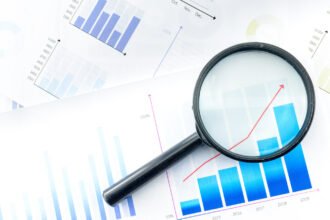 In this post, I’ll focus on customer intelligence driven marketing and the proper use of data. In the “information economy,” data is created at an unbelievable pace, but to make some reasonable business use of that data is challenging. The concept of being a data driven business isn’t new, but there are a lot of barriers that must be overcome, both technical and cultural.
In this post, I’ll focus on customer intelligence driven marketing and the proper use of data. In the “information economy,” data is created at an unbelievable pace, but to make some reasonable business use of that data is challenging. The concept of being a data driven business isn’t new, but there are a lot of barriers that must be overcome, both technical and cultural.
 In this post, I’ll focus on customer intelligence driven marketing and the proper use of data. In the “information economy,” data is created at an unbelievable pace, but to make some reasonable business use of that data is challenging. The concept of being a data driven business isn’t new, but there are a lot of barriers that must be overcome, both technical and cultural. In other words businesses need to systematically move from “big data”, which is just a large pile of useless “stuff”, to “smart data”, or data in the right business context, delivered to the right person at the time of need.
In this post, I’ll focus on customer intelligence driven marketing and the proper use of data. In the “information economy,” data is created at an unbelievable pace, but to make some reasonable business use of that data is challenging. The concept of being a data driven business isn’t new, but there are a lot of barriers that must be overcome, both technical and cultural. In other words businesses need to systematically move from “big data”, which is just a large pile of useless “stuff”, to “smart data”, or data in the right business context, delivered to the right person at the time of need.
Analytics and business intelligence are evolving from the days of historical reporting to a dynamic approach to providing real time usable insights. From a system standpoint, I’ve written about this idea before, moving to systems of decision. I won’t go back through the 3 systems, transaction, decision and relationship again here, but you can refer to several other posts including this recent one on productivity.
The purpose of this series and this post is to talk about these systems of decision in the context of customer intelligence driven marketing and the data value chain. This application of data in the marketing context is a very important transition for marketing and requires a more coordinated and integrated approach both from the necessary technology and from the marketing employees themselves. Focusing on the data value chain it looks something like this:

Customer Data Value Chain:
- Collection – The collection and storage process isn’t something new really although it must involve more data sources, many of which are unstructured and will require new ways of storing and processing. Traditional data like customer information, transactions, service issues, etc. are a part of the mix of course (which presupposes that the company has a basic CRM system in place). The newer sources of data, which can come from social media monitoring tools, customer communities or even smart sensor data (think smart electrical meters for example), can prove a rich source of additional customer insights when processed and mapped with the traditional data sources.
- Optimization – Once data is collected various types of analytic software can be used to make the data useful. The data is often integrated, processed and turned into various visualizations that could range from reports to dashboards. Optimized data is referenced to some business context that is the key to making the data into usable information.
- Trend – Once data is processed and visualized in some way it can be used to establish historical trends that can be useful across many marketing activities. Trend data is used to refine targeting of campaigns, find cross sell opportunities, support dynamic web content, define and refine loyalty programs and a variety of other functions.
- Predictive – Taking publically available social web data, which represents attitudes, opinions, needs, etc. of customers as well as transaction data and applying behavioral models can yield analysis that can with reasonable accuracy, predict customer and prospect behavior. There are a lot of uses of this model driven approach across marketing and sales. In the customer community context, for example, these behavioral models could be used to identify future influencers or find influencers that were starting to cool off on your brand. In sales the same techniques could predict buying signals to optimize sales efforts.
- Decisions – The top of the chain is providing data in the correct business context and in real time to the right employee or group of employees to support effective business decisions. This move from backward facing historical data to forward facing real time decision support is the building block of the data driven enterprise. The systems of decision integrate with systems of relationship to help identify and bring together the optimized set of employees or other constituents in the business context of the issue, decision, problem, etc. to facilitate fast, efficient real time business issue resolution, strategy optimization and more accurate, iterative actions.
Just one additional thought about this data value chain, it does not and can not, in any way, risk customer / prospect privacy. This point is critical and a privacy breech is one of the fastest ways to tarnish a brand. The social data collected and analyzed must all be from public sources and any confidential customer data around transactions and other activities with the company must be protected. I hope this is just me being over careful with all the discussions and focus online over privacy, but I guess you never know.








